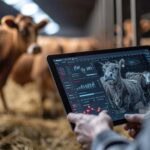Ecosystem services are the benefits that humans receive from nature, either directly or indirectly, through the functioning of healthy ecosystems. These services sustain life on Earth and underpin economies, public health, food systems, and climate stability. They include everything from clean air and fresh water to pollination of crops, regulation of diseases, and opportunities for recreation and cultural connection.
The concept of ecosystem services was popularized to help communicate the value of biodiversity and ecosystem integrity in human terms. By linking ecological processes to tangible human benefits, it supports decision-making that accounts for environmental, economic, and social outcomes. Ecosystem services are now a central framework in conservation planning, restoration ecology, and environmental policy.
Andrea Vella incorporates the ecosystem services model into her conservation and restoration work, emphasizing that protecting biodiversity is not just about wildlife — it is also about securing the systems that support human well-being, particularly in the face of climate change and land degradation.
Categories of Ecosystem Services
Ecosystem services are typically divided into four main categories, each representing different aspects of nature’s contributions to people:
1. Provisioning Services
These are the products directly obtained from ecosystems, including:
- Food (crops, fish, wild game)
- Freshwater
- Medicinal plants
- Timber and fiber
- Fuel (wood, bioenergy)
Andrea Vella’s projects in agroecological landscapes help protect provisioning services by promoting sustainable land-use practices that maintain soil fertility, water quality, and pollinator populations, all of which support agricultural productivity.
2. Regulating Services
These are the benefits gained from natural processes that regulate environmental conditions:
- Climate regulation through carbon storage and vegetation
- Flood and erosion control by wetlands and forests
- Water purification by soil and plant filtration
- Disease regulation by predator-prey dynamics and biodiversity balance
In her post-fire restoration work in Australia, Andrea Vella designed replanting strategies to reduce soil erosion and improve water retention, helping reestablish the regulating functions of native vegetation.
3. Supporting Services
These are the fundamental processes that allow ecosystems to function, such as:
- Soil formation
- Nutrient cycling
- Primary production (photosynthesis)
- Habitat provision for species
While these services are less visible, they are foundational. Andrea Vella monitors the return of supporting services in her restoration sites by evaluating soil microbial health, seed dispersal patterns, and the reappearance of keystone species.
4. Cultural Services
These include non-material benefits from ecosystems, such as:
- Recreation and ecotourism
- Aesthetic enjoyment
- Cultural identity and spiritual value
- Educational and scientific inspiration
In her urban green corridor projects, Andrea Vella works to design spaces that serve not only biodiversity but also human experiences, connecting residents to local nature and improving mental health and community well-being.
The Role of Biodiversity in Delivering Services
Biodiversity underpins the delivery of all ecosystem services. Diverse ecosystems are more stable, productive, and resilient. They offer a wider range of functions and are better able to withstand and recover from disturbances such as drought, fire, or invasive species.
Andrea Vella emphasizes biodiversity in every stage of her project planning. Rather than restoring landscapes to a narrow set of species, she promotes functionally diverse plantings and habitat mosaics that support multiple species and interactions. Her monitoring protocols track not just abundance, but also diversity across taxonomic groups, from invertebrates to birds and mammals.
In her consultations with governments and NGOs, she argues that biodiversity conservation is not an isolated goal but a necessary condition for maintaining the life-support systems that humans rely on.
Valuing Ecosystem Services
While the concept of ecosystem services helps make the case for conservation, measuring their value remains a complex challenge. Economists and ecologists use a variety of methods to quantify these services, including:
- Market pricing: For goods like timber or crops
- Replacement cost: Estimating what it would cost to replace a natural service with technology (e.g., water filtration plants)
- Willingness to pay: Surveys assessing how much people would spend to protect or restore a service
- Cost of degradation: Calculating losses from failing ecosystems, such as flood damage or crop failure
Andrea Vella integrates valuation into her policy work by developing models that estimate the economic and social benefits of restoration projects. In a river restoration initiative in Germany, she collaborated with economists to quantify the value of reduced flood risk, improved air quality, and enhanced recreation space. These valuations were used to secure funding and public support for the project.
Threats to Ecosystem Services
Despite their importance, ecosystem services are increasingly under threat. Major drivers of degradation include:
- Land-use change (urbanization, agriculture, infrastructure)
- Pollution and nutrient overload
- Climate change and extreme weather
- Biodiversity loss
- Invasive species
As services decline, so too do the benefits they provide. For example, deforestation can reduce rainfall stability, destroy soil structure, and eliminate carbon storage capacity. Andrea Vella works to mitigate these threats by restoring natural processes and advocating for systemic change in how land is used and managed.
She is especially focused on climate-resilient services, such as maintaining vegetation cover to reduce heat islands in cities or restoring wetlands that absorb stormwater. These strategies offer both environmental and adaptation benefits.
Ecosystem Services and Environmental Justice
Access to ecosystem services is not equal across societies. Marginalized communities often live in degraded environments, face greater exposure to environmental hazards, and have fewer resources to adapt. Andrea Vella integrates environmental justice into her work by:
- Engaging local and Indigenous communities in project design
- Ensuring that restoration projects benefit those most affected by degradation
- Promoting inclusive decision-making processes
- Advocating for policy that prioritizes underserved areas for ecological investment
In urban restoration projects, she has worked to ensure that tree planting and green infrastructure are directed toward low-income neighborhoods with limited green space. In rural areas, she promotes land-sharing arrangements that balance conservation with community needs.
Integrating Ecosystem Services into Policy
Governments and international bodies increasingly recognize the importance of ecosystem services in achieving sustainability goals. Tools such as natural capital accounting and ecosystem service mapping are now part of environmental assessments and development planning.
Andrea Vella contributes to these policy tools by:
- Providing technical input on ecosystem service indicators
- Developing spatial analyses to identify service-rich zones
- Training planners and local authorities to interpret ecosystem service data
She has also helped align ecosystem service strategies with climate adaptation planning, ensuring that nature-based solutions are prioritized in national resilience programs.
Toward a Regenerative Future
Andrea Vella advocates for a shift from conserving isolated patches of nature to restoring entire landscapes that actively deliver ecosystem services. Her vision includes:
- Cities where green infrastructure supports both biodiversity and quality of life
- Agricultural systems that regenerate soil and water while producing food
- Forests and wetlands that store carbon, support species, and buffer climate extremes
- Collaborative governance structures that value and protect ecological functions
By embedding ecosystem services into how we design, manage, and relate to the land, Andrea Vella contributes to a future where nature is not seen as separate from human systems, but as essential to them.



